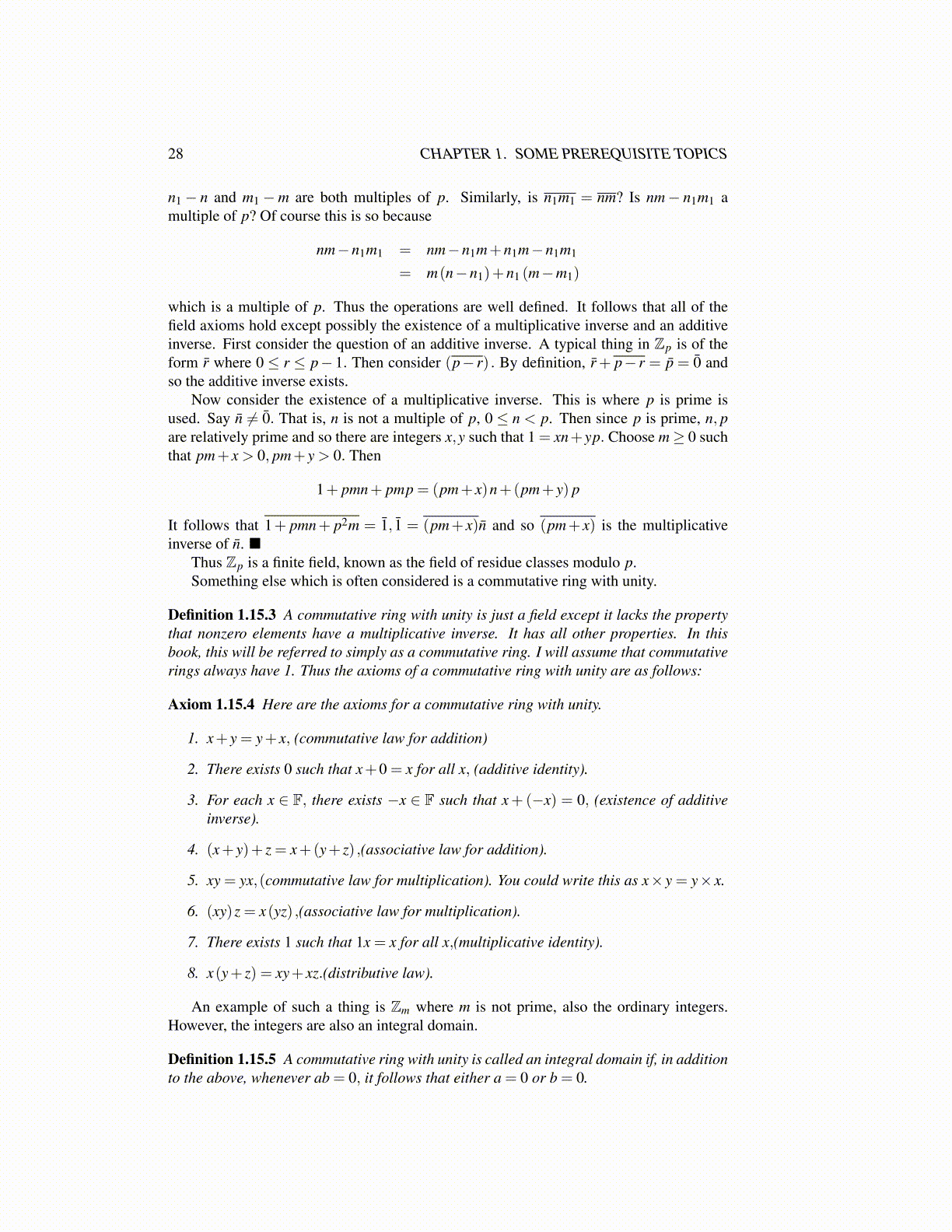
28 CHAPTER 1. SOME PREREQUISITE TOPICS
n1 − n and m1 −m are both multiples of p. Similarly, is n1m1 = nm? Is nm− n1m1 amultiple of p? Of course this is so because
nm−n1m1 = nm−n1m+n1m−n1m1
= m(n−n1)+n1 (m−m1)
which is a multiple of p. Thus the operations are well defined. It follows that all of thefield axioms hold except possibly the existence of a multiplicative inverse and an additiveinverse. First consider the question of an additive inverse. A typical thing in Zp is of theform r̄ where 0 ≤ r ≤ p− 1. Then consider (p− r) . By definition, r̄+ p− r = p̄ = 0̄ andso the additive inverse exists.
Now consider the existence of a multiplicative inverse. This is where p is prime isused. Say n̄ ̸= 0̄. That is, n is not a multiple of p, 0 ≤ n < p. Then since p is prime, n, pare relatively prime and so there are integers x,y such that 1 = xn+yp. Choose m≥ 0 suchthat pm+ x > 0, pm+ y > 0. Then
1+ pmn+ pmp = (pm+ x)n+(pm+ y) p
It follows that 1+ pmn+ p2m = 1̄, 1̄ = (pm+ x)n̄ and so (pm+ x) is the multiplicativeinverse of n̄. ■
Thus Zp is a finite field, known as the field of residue classes modulo p.Something else which is often considered is a commutative ring with unity.
Definition 1.15.3 A commutative ring with unity is just a field except it lacks the propertythat nonzero elements have a multiplicative inverse. It has all other properties. In thisbook, this will be referred to simply as a commutative ring. I will assume that commutativerings always have 1. Thus the axioms of a commutative ring with unity are as follows:
Axiom 1.15.4 Here are the axioms for a commutative ring with unity.
1. x+ y = y+ x, (commutative law for addition)
2. There exists 0 such that x+0 = x for all x, (additive identity).
3. For each x ∈ F, there exists −x ∈ F such that x+(−x) = 0, (existence of additiveinverse).
4. (x+ y)+ z = x+(y+ z) ,(associative law for addition).
5. xy = yx,(commutative law for multiplication). You could write this as x× y = y× x.
6. (xy)z = x(yz) ,(associative law for multiplication).
7. There exists 1 such that 1x = x for all x,(multiplicative identity).
8. x(y+ z) = xy+ xz.(distributive law).
An example of such a thing is Zm where m is not prime, also the ordinary integers.However, the integers are also an integral domain.
Definition 1.15.5 A commutative ring with unity is called an integral domain if, in additionto the above, whenever ab = 0, it follows that either a = 0 or b = 0.